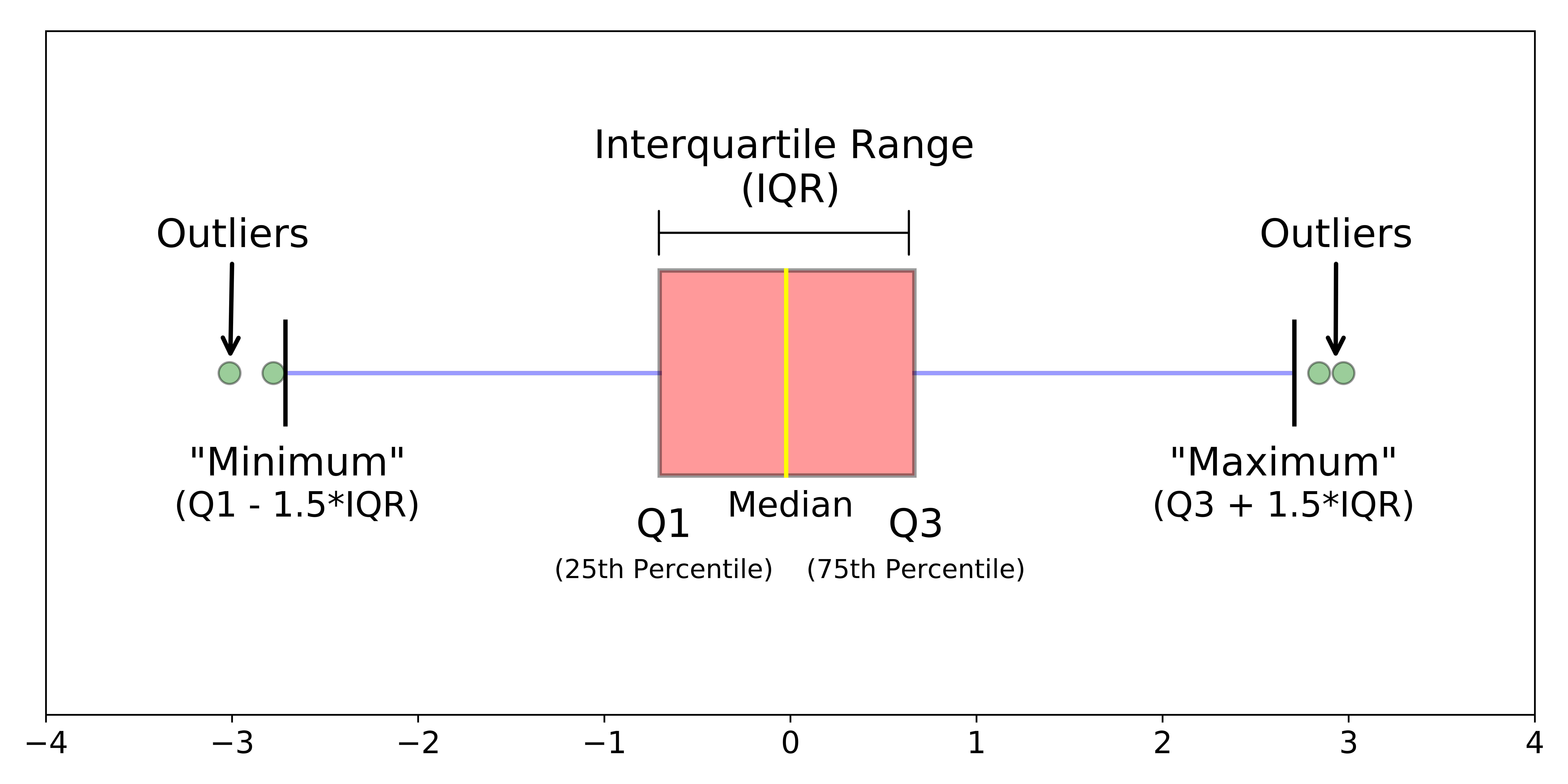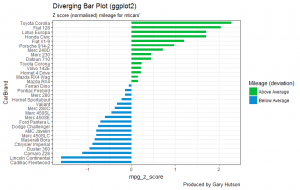R Plots Not Showing

It’s not always easy getting the right size. The image is CC by Kristina Gill. A vital part of statistics is producing nice plots, an area where R is outstanding. The graphical ablility of R is often listed as a major reason for choosing the language. It is therefore funny that exporting these plots is such an issue in Windows. The R ggplot2 dot Plot or dot chart consists of a data point drawn on a specified scale. Let me show how to Create an R ggplot dotplot, Format its colors, plot horizontal dot plots with an example. For this R ggplot2 Dot Plot demonstration, we use the airquality data set provided by the R. A plot or image output element that can be included in a panel. The arguments clickId and hoverId only work for R base graphics (see the graphics package). They do not work for grid-based graphics, such as ggplot2, lattice, and so on. Interactive plots. Plots and images in Shiny support mouse-based interaction, via clicking, double-clicking, hovering, and brushing. I am trying to make a 'parallel coordinate plot' of the famous iris data set. Instead of loading the iris data set through the github link, I tried to use the built in iris data set that is available in R.
This is the second part of the Mastering R plot series.
The standard plot function in R allows extensive tuning of every element being plotted. There are, however, many possible ways and the standard help file are hard to grasp at the beginning. In this article we will see how to control every aspects of the axis (labels, tick marks …) in the standard plot function.
Axis title and labels
Create some data and create a plot with default settings.
Here is the plot:

The settings of the plot are usually controlled by the par function (see ?par for the many possible arguments), once the arguments are set in par they apply to all subsequent plots. Some arguments in par (for example cex.axis) can also be set in other plot functions like axis or text. When these arguments are set in these other functions they will then apply only to the current plot. One can then control if he/she wants all plots to be affected by the change or only the current one.
Here is the plot:
A handy function to gain deeper control into the axis is the axis function which can control among other things at which values the tick marks are drawn, what axis labels to put under the tick marks, the line type and width of the axis line, the width of the tick marks, the color of the tick marks and axis line.
Here is the plot:
Also note that an R plot has four sides, starting on the bottom and going clockwise (ie side=3 correspond to the top of the graph).

Tick marks
Let’s turn now to the tick marks, they can also be controlled either from par or from axis.
Here is the plot:
Here we saw a third additional function, mtext, which allow one to write text outside of the plotting area (I guess that mtext stands for “margin text”). We have to specify how far from the plotting region one wants to write the text with the line argument. This concept of lines is important to understand how to control spaces around the plotting region. We controlled it earlier in this post when I used the mar argument which sets how many lines are available on each sides of the plot. Let’s look at this in more details:
Here is the plot:
From this last graph it is easy to grasp that on each side of the plot there are a certain number of lines, have a look at par()$mar for the default numbers. Using this, one can control how much space to create around the plot but also where to write axis labels or titles. Next time we’ll extend this concept of margins by talking about the outer margins from the plot, until then happy plotting!
Related
Generic X-Y Plotting
Generic function for plotting of R objects. For more details about the graphical parameter arguments, see par.
For simple scatter plots, plot.default will be used. However, there are plot methods for many R objects, including functions, data.frames, density objects, etc. Use methods(plot) and the documentation for these.
- Keywords
- hplot
Usage
Arguments
the coordinates of points in the plot. Alternatively, a single plotting structure, function or any R object with a plot method can be provided.
the y coordinates of points in the plot, optional if x is an appropriate structure.
Arguments to be passed to methods, such as graphical parameters (see par). Many methods will accept the following arguments:
typewhat type of plot should be drawn. Possible types are
'p'for points,'l'for lines,'b'for both,'c'for the lines part alone of'b','o'for both ‘overplotted’,'h'for ‘histogram’ like (or ‘high-density’) vertical lines,'s'for stair steps,'S'for other steps, see ‘Details’ below,'n'for no plotting.
types give a warning or an error; using, e.g., type = 'punkte' being equivalent to type = 'p' for S compatibility. Note that some methods, e.g.plot.factor, do not accept this.mainan overall title for the plot: see title.
suba sub title for the plot: see title.
xlaba title for the x axis: see title.
ylaba title for the y axis: see title.
aspthe (y/x) aspect ratio, see plot.window.
Details
The two step types differ in their x-y preference: Going from ((x1,y1)) to ((x2,y2)) with (x1 < x2), type = 's' moves first horizontal, then vertical, whereas type = 'S' moves the other way around.
See Also
plot.default, plot.formula and other methods; points, lines, par. For thousands of points, consider using smoothScatter() instead of plot().
For X-Y-Z plotting see contour, persp and image.
Aliases
- plot
Examples
library(graphics)# NOT RUN {require(stats) # for lowess, rpois, rnormplot(cars)lines(lowess(cars))plot(sin, -pi, 2*pi) # see ?plot.function## Discrete Distribution Plot:plot(table(rpois(100, 5)), type = 'h', col = 'red', lwd = 10, main = 'rpois(100, lambda = 5)')## Simple quantiles/ECDF, see ecdf() {library(stats)} for a better one:plot(x <- sort(rnorm(47)), type = 's', main = 'plot(x, type = 's')')points(x, cex = .5, col = 'dark red')# }Community examples
```r # Plot with multiple lines in different color: plot(sin,-pi, 4*pi, col = 'red') plot(cos,-pi, 4*pi, col = 'blue', add = TRUE) ```
R Markdown Plots Not Showing
```r ## Plot with multiple lines in different color: plot(sin,-pi, 4*pi, col = 'red') plot(cos,-pi, 4*pi, col = 'blue', add = TRUE) ```
plot(basedata1$iq, basedata$read_ab, main='Diagrama de Dispersión', xlab = 'read_ab', ylab = 'iq')
R Plot Title Not Showing
## Linear Regression ExamplePlot points and add linear regression model line:```rlinreg <- lm(dist ~ speed, cars)linreg_coeffs <- coef(linreg)lineq <- paste('distance = ', linreg_coeffs[2], ' * speed + ', linreg_coeffs[1])plot(cars, main = 'Car distance by speed', sub = lineq, xlab = 'speed', ylab = 'distance', pch = 19)abline(linreg, col = 'blue')```
Pass a numeric vector to the `x` and `y` arguments, and you get a scatter plot. The `main` argument provides a [`title()`](https://www.rdocumentation.org/packages/graphics/topics/title). ```{r} plot(1:100, (1:100) ^ 2, main = 'plot(1:100, (1:100) ^ 2)') ``` If you only pass a single argument, it is interpreted as the `y` argument, and the `x` argument is the sequence from 1 to the length of `y`. ```{r} plot((1:100) ^ 2, main = 'plot((1:100) ^ 2)') ``` `cex` ('character expansion') controls the size of points. `lwd` controls the line width. `pch` controls the shape of points - you get 25 symbols to choose from, as well as alphabetic characters. `col` controls the color of the points. When `pch` is `21:25`, the points also get a background color which is set using `bg`. [`points()`](https://www.rdocumentation.org/packages/graphics/topics/points) for more on how to change the appearance of points in a scatter plot. ```{r} plot( 1:25, cex = 3, lwd = 3, pch = 1:25, col = rainbow(25), bg = c(rep(NA, 20), terrain.colors(5)), main = 'plot(1:25, pch = 1:25, ...)' ) ``` If you specify `type = 'l'`, you get a line plot instead. See [`plot.default()`](https://www.rdocumentation.org/packages/graphics/topics/plot.default) for a demonstration of all the possible values for type. ```{r} plot( (1:100) ^ 2, type = 'l', main = 'plot((1:100) ^ 2, type = 'l')' ) ``` `lty` controls the line type. `col` and `lwd` work in the same way as with points. [`lines()`](https://www.rdocumentation.org/packages/graphics/topics/lines) for more on how to change the appearance of lines in a line plot. ```{r} plot( (1:100) ^ 2, type = 'l', lty = 'dashed', lwd = 3, col = 'chocolate', main = 'plot((1:100) ^ 2, type = 'l', lty = 'dashed', ...)' ) ``` It is best practise to keep your `x` and `y` variables together, rather than as separate variables. ```{r} with( cars, plot(speed, dist, main = 'with(cars, plot(speed, dist))') ) ``` The formula interface, similar to modeling functions like [`lm()`](https://www.rdocumentation.org/packages/stats/topics/lm), makes this convenient. See [`plot.formula()`](https://www.rdocumentation.org/packages/graphics/topics/plot.formula) for more information. ```{r} plot( dist ~ speed, data = cars, main = 'plot(dist ~ speed, data = cars)' ) ``` If you pass a two column data frame or matrix then the columns are treated as the x and y values. So in this case, you can simply do: ```{r} plot(cars, main = 'plot(cars)') ``` The [`lines()`](https://www.rdocumentation.org/packages/graphics/topics/lines), [`points()`](https://www.rdocumentation.org/packages/graphics/topics/points) and [`title()`](https://www.rdocumentation.org/packages/graphics/topics/title) functions add lines, points and titles respectively to an existing plot. ```{r} plot(cars) lines(lowess(cars)) title('plot(cars); lines(lowess(cars))') ``` If the `x` variable is categorical, `plot()` knows to draw a box plot instead of a scatter plot. See [`boxplot()`](https://www.rdocumentation.org/packages/graphics/topics/boxplot) for more information on drawing those. ```{r} with( sleep, plot(group, extra, main = 'with(sleep, plot(group, extra))') ) ``` Again, the formula interface can be useful here. ```{r} plot(extra ~ group, sleep, main = 'plot(extra ~ group, sleep)') ``` Axis limits can be set using `xlim` and `ylim`. ```{r} plot( (1:100) ^ 2, xlim = c(-100, 200), ylim = c(2500, 7500), main = 'plot((1:100) ^ 2, xlim = c(-100, 200), ylim = c(2500, 7500))' ) ``` You can set log-scale axes using the `log` argument. ```{r} plot( exp(1:10), 2 ^ (1:10), main = 'plot(exp(1:10), 2 ^ (1:10))' ) plot( exp(1:10), 2 ^ (1:10), log = 'x', main = 'plot(exp(1:10), 2 ^ (1:10), log = 'x')' ) plot( exp(1:10), 2 ^ (1:10), log = 'y', main = 'plot(exp(1:10), 2 ^ (1:10), log = 'y')' ) plot( exp(1:10), 2 ^ (1:10), log = 'xy', main = 'plot(exp(1:10), 2 ^ (1:10), log = 'xy')' ) ``` If you pass a table of counts for a vector, `plot()` draws a simple histogram-like plot. See [`hist()`](https://www.rdocumentation.org/packages/graphics/topics/hist) for a more comprehensive histogram function. ```{r} plot( table(rpois(100, 5)), main = 'plot(table(rpois(100, 5)))' ) ``` For multi-dimensional tables, you get a mosaic plot. See [`mosaicplot()`](https://www.rdocumentation.org/packages/graphics/topics/mosaicplot) for more information. ```{r} plot( table(X = rpois(100, 5), Y = rbinom(100, 10, 0.75)), main = 'plot(table(X = rpois(100, 5), Y = rbinom(100, 10, 0.75)))' ) ``` You can also pass functions to plot. See [`curve()`](https://www.rdocumentation.org/packages/graphics/topics/curve) for more examples. ```{r} plot( sin, from = -pi, to = 2 * pi, main = 'plot(sin, from = -pi, to = 2 * pi)' ) ``` Use the axis function to give fine control over how the axes are created. See [`axis()`](https://www.rdocumentation.org/packages/graphics/topics/axis) and [`Axis()`](https://www.rdocumentation.org/packages/graphics/topics/Axis) for more info. ```{r} plot( sin, from = -pi, to = 2 * pi, axes = FALSE, main = 'plot(sin, axes = FALSE, ...); axis(1, ...); axis(2)' ) axis( 1, # bottom axis pi * (-1:2), c(expression(-pi), 0, expression(pi), expression(2 * pi)) ) axis(2) # left axis ``` Further graphical parameters can be set using [`par()`](https://www.rdocumentation.org/packages/graphics/topics/par). See [`with_par()`](https://www.rdocumentation.org/packages/withr/topics/with_par) for the best way to use `par()`. ```{r} old_pars <- par(las = 1) # horizontal axis labels plot((1:100) ^ 2, main = 'par(las = 1); plot((1:100) ^ 2)') par(old_pars) # reset parameters ```